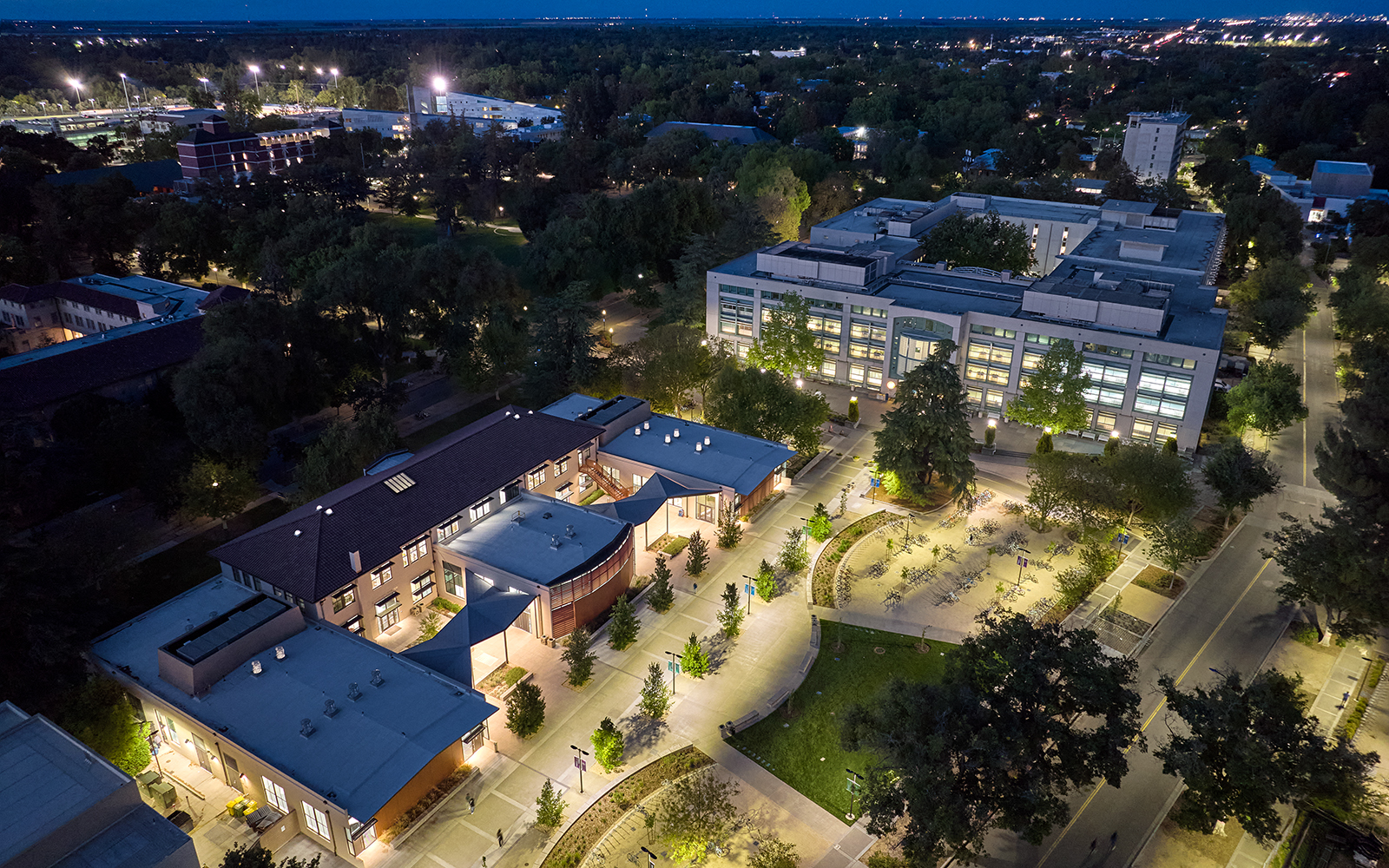|
|
Jim Carroll says his work is tied closely to the land that surrounds him. How could it not be? Carroll is the associate vice chancellor and university architect for the University of California, Davis (UC Davis), known as a “public ivy” for its prestigious educational offerings at a fraction of the cost.
The California University Farm Bill of 1905 required a farm for the University of California system, and a committee selected a 779-acre site near a small county town formerly known as Davisville. While the University Farm opened in 1908, it took until 1924 to move the College of Agriculture to the Davis location. Since 1959, Davis has been a campus of the UC System. In spite of the slow and steady growth from 1908 to 1959, UC Davis grew swiftly throughout the 1960s and 1970s, yielding a significant number of mid-century modern structures which still define the campus core today. As a result, the campus has a large portfolio of renovation projects to execute. Carroll is committed to leading the stewardship of these existing resources into the next decade.
Fulfilling that commitment is a layered and complex duty as Carroll is tasked with simultaneously providing modern amenities and learning environments addressing the needs of a growing student body while respecting and maintaining the tradition of an historic campus and grounds.

Its first four buildings were constructed by the end of 1907. In the next 23 years, UC Davis would expand into a campus covering more than 1,000 acres. That acreage would triple in the next three decades, and by 2017, UC Davis was the largest physical campus within the University of California at 5,300 acres. Today, Carroll and his 100-person team provide engineering, design, space planning, real estate, and construction management services on a campus with more than 1,000 buildings spanning 12 million square feet and a program budget valued at more than $1.5 billion.
Carroll, a University of Maryland trained architect who started a private practice career in the Washington, DC, and Baltimore markets, developed a passion for higher education while at Auburn University. After about seven years in Alabama, he moved west to California for the chance to effect change within a large university system.
During his time in the higher education sector, Carroll has learned to promote patience, understanding, and communication to keep stakeholders informed and focused on the project’s goals. “Every part of the campus has either been developed or has a deep history. “There are a lot of people involved, and we’re committed to developing an effective design and construction program to serve our students and community.”
Four years ago, the university system required all facilities to undergo new seismic ratings with any necessary improvements completed by 2030. This helped Carroll and his team to prioritize other work to couple with the seismic improvements and decide which structures to keep and which to recommend for including in a demolition program. His team evaluated 1,186 existing buildings, vacated 3, and tagged 150 for further study and seismic enhancements.

Capital goals require the office of design and construction management to also consider changing programmatic needs. “We can’t just go in and upgrade old buildings to meet new seismic demands, because departments change over 60 years,” Carroll explains. “We develop solutions to program and compliance issues at the same time.” That yields a substantial renovation program.
Although the institution also has a busy medical campus in nearby Sacramento, Carroll works mostly in UC Davis. There, his team is taking a phased approach to minimize disruptions to students and faculty while introducing needed improvements and maintenance projects to a wide variety of structures including arenas, stadiums, student unions, classrooms, study spaces, and labs.
As Carroll and his team move these intricate projects forward, they’re careful to do so with environmental goals and sustainability initiatives in mind. These days, that has Carroll thinking a lot about what we can do to remove natural gas connections to move UC Davis toward a fossil fuel free future. Both UC’s systemwide sustainable goals and UC Davis’ Blueprint for a Green Future call for facilities to reduce energy consumption and carbon emissions. All new buildings follow LEED principles and ASHRAE standards and major renovations must outperform California building codes by at least 20 percent.
In late 2021, UC Davis earned the top spot among North American universities and fifth in the world in the University of Indonesia’s GreenMetric World University Rankings. Carroll says the award validates the approach he and others in the system take. “Sustainability is in our DNA,” he says. “It’s not only in our buildings; it’s in everything the university does.”
Carroll has worked on the Owner’s side in higher education for more than 10 years and is happy with his decision to specialize in the field because he can see the direct impact his efforts make on students, teachers, and the campus community. “The big things we do lead to great outcomes, but even small moves can make a big difference,” he says. “A new study space or a better furniture solution can help someone here learn, do better research, and achieve their goals as a student.” And Carroll knows what happens next—those students leave UC Davis to go forth and change the world.


